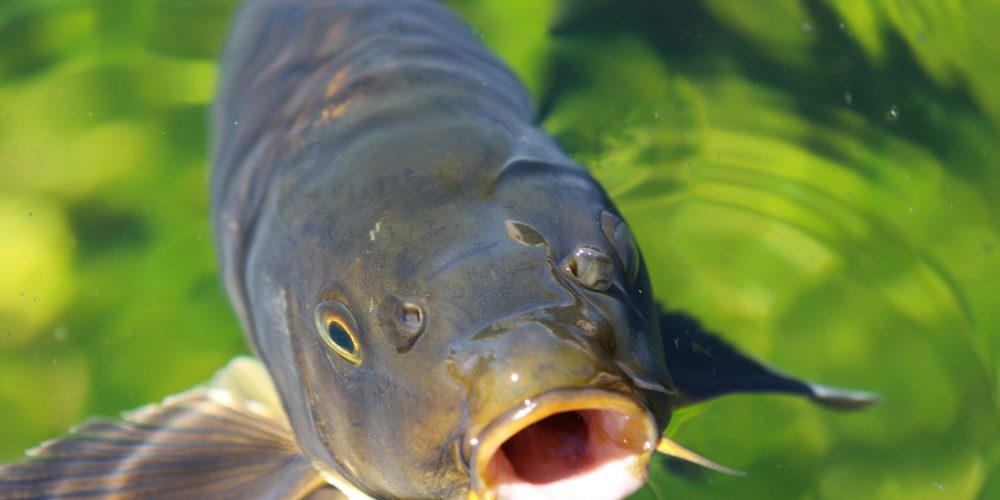Anyone doubting whether Asian carp could successfully breed in the Great Lakes watershed got their answer Monday as researchers with the U.S. Geological Survey and Bowling Green State University in Ohio announced four grass carp were found to have lived and bred in the Sandusky River, a tributary of Lake Erie.
This is a critical milestone. Canadian and US scientists and policy makers have been holding onto a last hope that, should the destructive invasive species make its way into the watershed, they may not be able to survive or breed in the cold, deep waters of the Great Lakes.
Anyone doubting whether Asian carp could successfully breed in the Great Lakes watershed got their answer Monday as researchers with the U.S. Geological Survey and Bowling Green State University in Ohio announced four grass carp were found to have lived and bred in the Sandusky River, a tributary of Lake Erie.
This is a critical milestone. Canadian and US scientists and policy makers have been holding onto a last hope that, should the destructive invasive species make its way into the watershed, they may not be able to survive or breed in the cold, deep waters of the Great Lakes.
But scientists and researchers threw cold water on that idea with the revelation Monday that the fish, the four grass carp that were captured in October 2012 by commercial fishers, had spent their entire lives in the Great Lakes basin and were not introduced as sterile specimens for stocking purposes.
Duane Chapman, a USGS fisheries biologist, told reporters bluntly: “This is bad news.”
Bad News
“It would have been a lot easier to control these fish if they’d been limited in the number of places where they could spawn,” Chapman said.
While it won’t be impossible to control the species, it does make the work of enforcement officers more difficult. Luckily, the administration of U.S. President Barack Obama has understood the severity of the issue and has committed more than $200 million to combatting their spread.
Part of the issue facing scientists and researchers is identifying and controlling vector points between the Mississippi River watershed and the Great Lakes watershed. Scientists know of many such vector points, but they are attempting to plug an unknown number of leaks in unknown locations at unknown times.
“These findings are significant because they confirm recent USGS research indicating that shorter rivers, like the Sandusky, are potential spawning sites for grass carp and other Asian carps as well. The study may also provide resource managers an opportunity to address the spread of grass carp before it becomes problematic,” Chapman said in a news release on the USGS website.
Fish Bone Analysis
Other grass carp have been caught in tributary rivers to the Lake Erie, such as two grass carp seized by federal Department of Fisheries and Oceans scientists in the Grand River on the Ontario side of the lake. But unlike those grass carp, the four specimens analyzed from the Sandusky River were capable of breeding.
Scientists used bones inside the fishes’ heads called otoliths that provide a detailed chemical analysis of the water a fish has spent its life in.
“Analysis of those bones indicates that the four captured grass carp had lived in the Sandusky watershed their entire lives,” according to the USGS release. “Scientists ruled out the possibility that the fish originated from a fish farm by comparing their otoliths to those from reference pond fish.”
Canadian Inaction
Here in Ontario, Natural Resource Minister David Orazietti fielded questions from opposition critics Monday for the lack of action on the Asian carp file in the latest Great Lakes Protection Act legislation brought forward by Environment Minister Jim Bradley this year.
“People are concerned about serious threats to our Great Lakes, and your government seems paralyzed as far as taking any action,” said Progressive Conservative MPP Toby Barrett.
“You talk about your strategy, your goals, your intentions, setting up panels but no action where immediate action in conjunction with Great Lakes states and the federal government is crucial and long overdue,” he said in the House.
Speaking with reporters after Question Period Monday, Orazietti said the government takes the threat posed by Asian carp very seriously and has been working closely with counterparts in the United States and Ottawa to assess the threats.
“We are the first government in Ontario to establish an Invasive Species research centre in the province and we are working to break down the barriers with the federal government,” Orazietti said.
The minister didn’t know the exact figure that Queen’s Park has injected into combatting Asian carp, but he indicated the government has put more than $15 million into Sault Ste. Marie’s Invasive Species Centre. And while the Centre deals with other aquatic and terrestrial invasives, Asian carp are a large component of their future monitoring and policy actions.
“The enforcement efforts to date have been good and have stopped more than 39,000 pounds of Asian carp destined for Ontario markets,” Orazietti said.
“But in particular this is about educating Ontarians of the significant threat posed by Asian carp in Ontario.”
For more on the spread of Asian carp in the United States and the threat they pose to the Great Lakes, see a piece Andrew wrote in July 2012 for This Magazine called Attack of the Killer Carp.
Andrew Reeves is the Editor-in-Chief of Alternatives Journal. Overrun, his book about Asian carp in North America, will be published in Spring 2019 by ECW Press. His work has also appeared in the Globe & Mail, Spacing and Corporate Knights. Follow him on Twitter.












